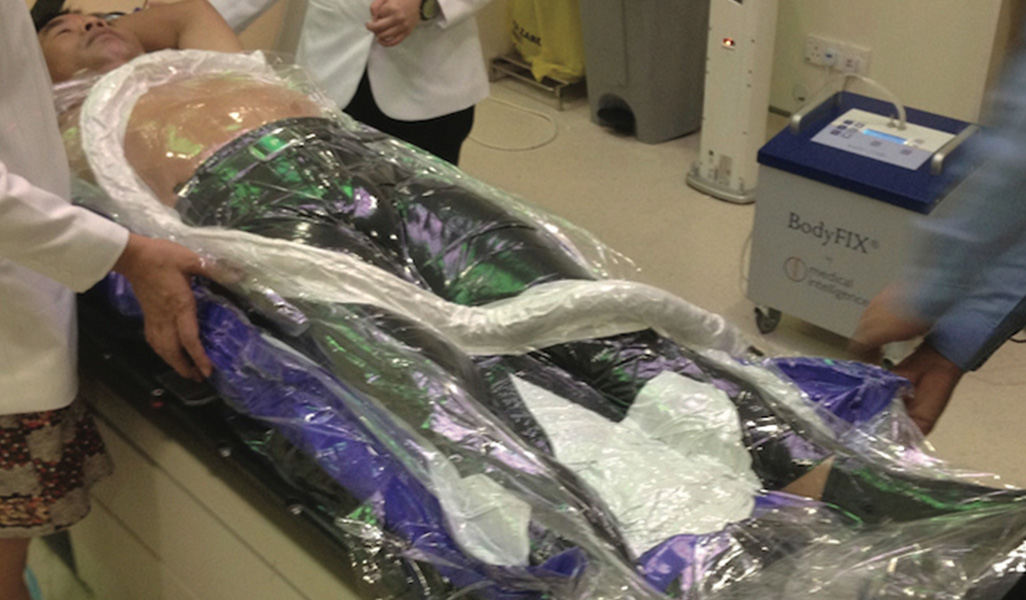News & Articles

Stereotactic Body Radiation Therapy (SBRT) vs Conventional Radiotherapy

Intense but precise
An advanced form of radiotherapy called stereotactic body radiation therapy is offering better chances of success. Parkway Cancer Centre’s Dr Lee Kuo Ann explains how it works and its advantages over conventional radiotherapy.
Radiation therapy, or radiotherapy, is a long-established way of treating cancer by targeting tumours with high-energy X-rays. Now, an advanced way of delivering this treatment is making waves – literally – and giving patients better chances of recovery.
Called stereotactic body radiation therapy (SBRT), it delivers highly intense but precise doses of radiation to cancerous tumours while minimising damage to nearby healthy tissues and cells. When done on the brain, it is called stereotactic radiosurgery (SRS).
The key difference between conventional radiotherapy and SBRT is in how the radiation is delivered. The former typically involves small doses of radiation, delivered carefully over many sessions that could last several weeks. By giving only a fraction of the total radiation dose needed each time, conventional radiotherapy gives normal cells time to repair themselves.
SBRT delivers much bigger doses of radiation – as many as five times – over fewer sessions. The radiation, however, is delivered very precisely. Highly-sophisticated computerised images (using CT, MRI or other imaging techniques) are used to identify the exact location, shape and size of a tumour, enabling doctors to decide how intense the radiation beams need to be, and the different angles that they can be delivered from to target the cancer cells precisely.
While conventional radiotherapy is done over the course of many weeks, SBRT can be completed in five or fewer sessions taking just one or two weeks.
Because it shapes and targets the radiation beams so precisely, SBRT reduces the collateral damage that radiotherapy usually does to surrounding tissues and cells. This leads to fewer side effects, though some general side effects – such as tiredness, weakness, sore skin and loss of hair – may still be experienced.
And because SBRT takes much less time in total, it is less likely to affect the administration of other cancer treatments, like chemotherapyn.
As a result, SBRT has given better outcomes than conventional radiotherapy. While the two-year success rate for the latter are typically between 30 and 40 per cent, the success rates for SBRT can be double or more, from 80 to 90 per cent.
SBRT is usually used to treat cancers involving small, well-defined tumours in parts of the body where surgery might be risky – for example, the lungs, liver, lymph nodes, spine, neck or other soft tissues.
SBRT can also be a primary treatment option for some patients who cannot tolerate surgery, as well as a re-irradiation option for those whose cancers have recurred and are not able to take more conventional therapy treatments.
Conventional radiation therapy
- Targets tumours with high-energy X-rays.
- Involves small doses of radiation, delivered over many sessions lasting several weeks.
- Two-year success rate: 30–40%
Stereotactic body radiation therapy (SBRT)
- Directs intense but precise doses of radiation to tumours.
- Bigger doses of radiation delivered over five or fewer sessions, taking just 1–2 weeks.
- Usually used for small, well-defined tumours.
- Generally causes less collateral damages to surrounding tissues.
- Two-year success rate: 80–90%
Written by Kok Bee Eng
| TAGS | cancer latest breakthrough, new ways to treat cancer, radiotherapy (radiation therapy) |
| PUBLISHED | 12 September 2019 |
